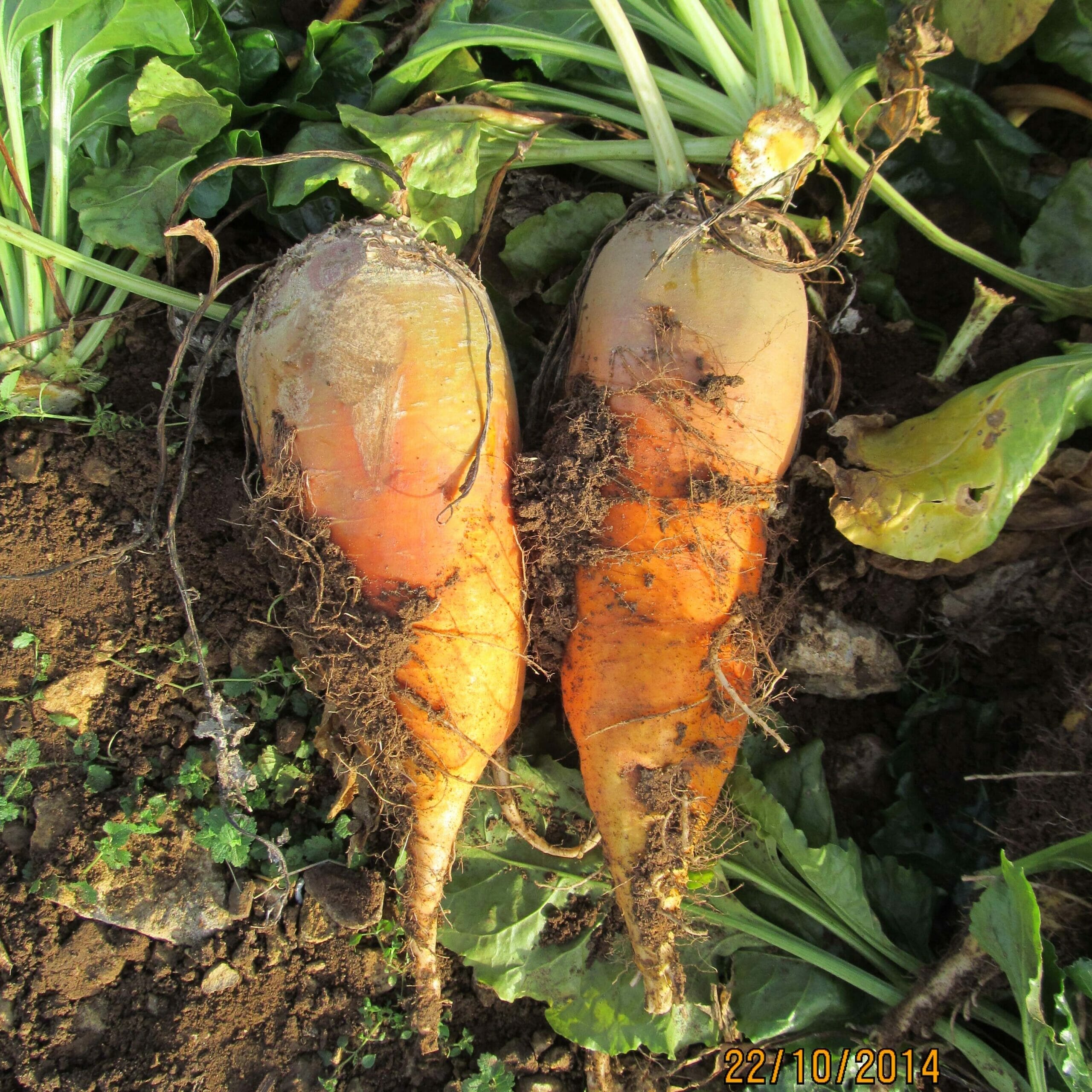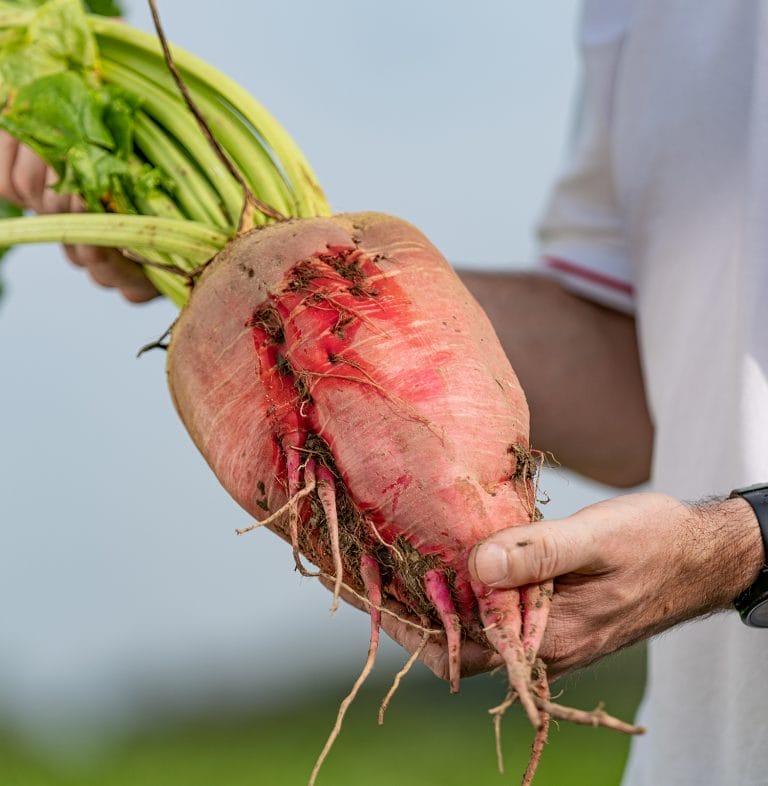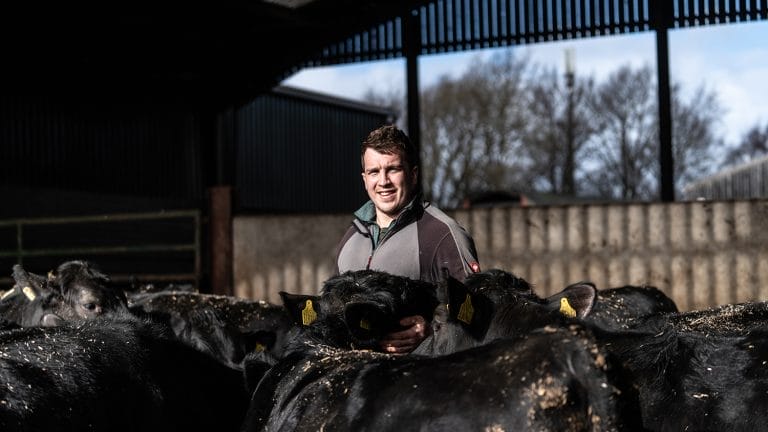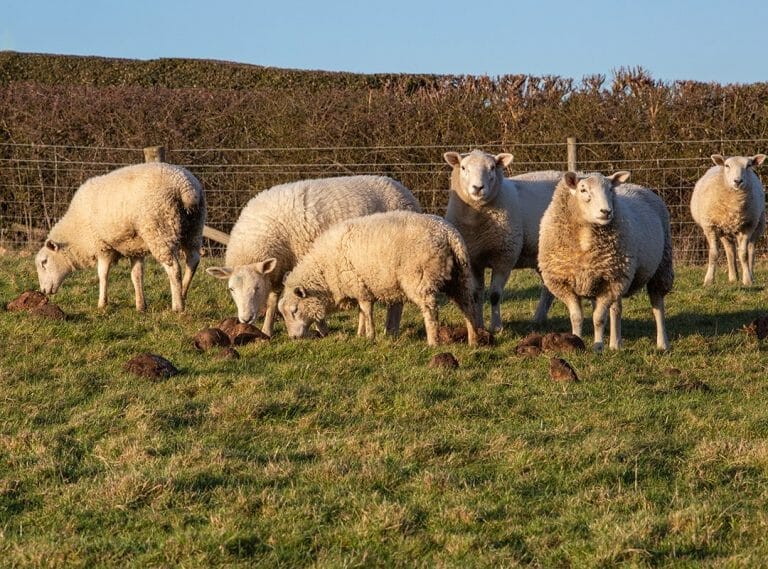For six months of the year the Derbyshire-based Hollyhurst Holstein herd tucks into fodder beet as part of their ration. It’s a firm favourite among his 200 cows, and it’s a feed that producer John Chamberlain rates highly.
Fodder beet has been part of the ration for the past six years on this dairy unit near Ashbourne. “We tried it out to supplement the forages in the diet – to add some energy to the ration,” says John. “It was so successful on all counts that we just kept using it. And the cows love it,” he adds, defying anyone to find any fodder beet along the feed face 30 minutes after feeding out at 8am.
The 200 milkers are fed 7kg of fodder beet daily as part of a TMR with grass silage, soya hulls, caustic wheat and a specially formulated blend. This supports average yields in this all year round calving herd of 10,000kg of milk at 4.5% fat and 3.45% protein on twice a day milking. Milk is sold to Arla on a 360 contract.
“We add it to the ration from the start of November until April – as long as it remains fresh,” says John. “It drives intakes and as soon as it goes into the ration butterfats improve. “My only regret is that it’s not available all year round.
“The good thing is that cows eat it as an extra, rather than instead of other forages. It’s very palatable and it certainly adds energy, cost-effectively, to the ration.”
John feeds 250 tonnes of fodder beet through winter, taking 10 tonne loads from Gary Pattison who grows 10 hectares of the crop every year for local’ish dairy and sheep producers.
“I usually grow four varieties,” says Gary, who points out that pretty good soils are needed to grow the crop. “The land can’t be too wet and heavy, otherwise the soil sticks to the beet.
“And the land must be worked to a fine seedbed before sowing from late March to mid April – after the frosts but in time to get it germinating early.
With the help of his merchant Rob Simister based in Ellastone, Derbyshire, Gary selects varieties that grow only partially in the ground as opposed to totally in the ground. “These are easier to lift – we harvest the beet early, before the frosts, and aim to get it all in the clamps by the end of November.
“We also look for a fairly clean beet that doesn’t need washing. We remove stones and loose soil before delivery.”
This year the varieties Brick and Robbos are among his selections. Some of the seed will be primed – Limagrain has a limited amount of Robbos primed seed available – to encourage faster germination thereby reducing the opportunity for pest and disease damage in the early establishment stages when the seedlings are at their most vulnerable.
“Growing a few varieties spreads the risk,” adds Gary. “Different varieties grow well on some fields and not others, so if we have a mix we can compensate for a shortfall if necessary.”
Having said that, Gary and his family are tried and tested fodder beet growers – they know the tricks of the trade and how to grow a good crop; one tip is adding salt to the seedbed before sowing which they nearly always do. “Fodder beet was always grown by the sea – it grows well with a bit of added salt,” he adds.

































